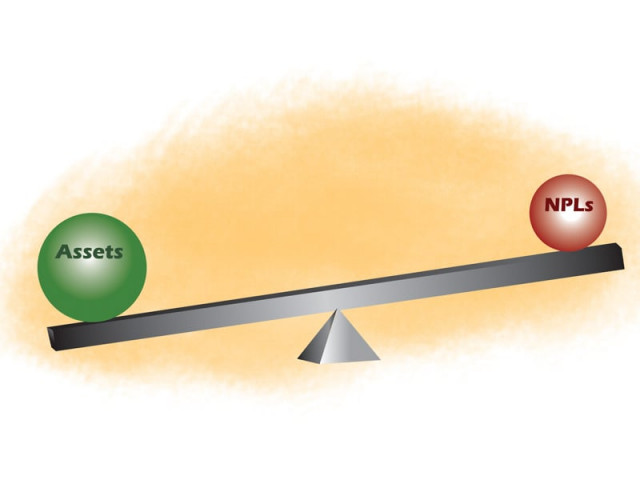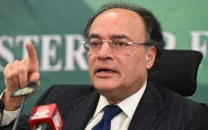Improved recoveries: Bad loans shrink with decline in interest rate
Banking industry’s NPLs drop Rs11.1 billion in July-Sept quarter.

NPLs amounted to Rs620.9 billion on September 30, which is 1.7% lower than the NPLs the banking sector had at the end of 2012-13. DESIGN: MUNIRA ABBAS
Non-performing loans (NPLs) of the banking industry of Pakistan shrank Rs11.1 billion in the first quarter of fiscal year 2013-14, according to the latest data released by the State Bank of Pakistan (SBP).
NPLs amounted to Rs620.9 billion on September 30, which is 1.7% lower than the NPLs the banking sector had at the end of 2012-13.
“Theoretically, NPLs tend to reduce whenever the central bank slashes the key interest rate. The fact that the SBP cut the discount rate by 50 basis points to 9% in June is reflected in the latest NPL figure,” Shajar Capital research analyst Syed Faizan Ahmed said while speaking to The Express Tribune on Wednesday.
In many cases, banks give out loans on a floating interest rate, which means the amount of mark-up fluctuates as per the central bank’s monetary policy. People tend to pay back their loans more willingly at a time when the interest rate is low, he said.
Notably, net NPLs of the banking sector as a percentage of net loans were 3.9% on September 30 as opposed to 4.5% on June 30.
Specialised banks had the highest net NPLs (14%) in terms of net loans. They are followed by DFIs (13.7%), public-sector banks (5.8%), local private banks (2.8%) and foreign banks (0.3%).
NPLs of commercial banks, which do not include non-performing loans of development finance institutions (DFIs), decreased Rs9 billion to Rs568.2 billion during the first quarter of the current fiscal year, the SBP data shows.
The largest drop in net NPLs as a percentage of net loans was recorded in the specialised banks’ category, as their bad loans fell from 17.1% to 14% in July-September.
Going forward, NPLs may increase slightly, Ahmed said, referring to the increasing interest rate environment that is partly a consequence of rising inflation in the economy.
NPLs of public-sector banks increased Rs29 million to Rs163.1 billion during July-September, while NPLs of local private banks decreased Rs8.8 billion over the same period.
According to Arif Habib Limited, commercial banks with the highest NPLs as a percentage of their gross loans outstanding include Habib Metro Bank (13.8%), National Bank (13.2%), United Bank (12.6%), Habib Bank (10.2%) and MCB Bank (10.2%).
“We suspect banks will continue to build up NPLs albeit at a slow pace. We believe the risk of rising interest rates and its subsequent impact on NPLs will partially be mitigated through further deleveraging loan sheets and improving individual sectors’ credit exposures,” analysts at Arif Habib Limited said in a research note.
Published in The Express Tribune, December 12th, 2013.
Like Business on Facebook, follow @TribuneBiz on Twitter to stay informed and join in the conversation.



















COMMENTS
Comments are moderated and generally will be posted if they are on-topic and not abusive.
For more information, please see our Comments FAQ